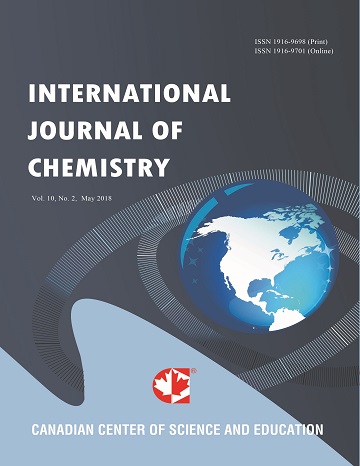Antibacterial Susceptibility of the Constituents of Ethanol Crude Extract and the Neutral Metabolite of the Root of Curculigo pilosa Hypoxidaceae
- D. C. Nwokonkwo
Abstract
Powdered fresh rhizomes of Curculigo pilosa Hypoxidaceae (African Crocus) were analyzed for their phytochemicals and antibacterial activities. The crude ethanol extract showed the presence of saponins, flavonoids, steroids, alkaloids, glycosides and phenols. This crude sample was partitioned into acidic, basic and neutral metabolites. The neutral portion indicated the presence of saponin, flavonoid, steroid, glycoside, phenol and alkaloid. The antimicrobial susceptibility tests using the crude sample and the metabolites were carried out on four human pathogens; Escherichia coli, staphylococcus aureus, pseudomonas aeruginosa and streptococcus faecalis. At a concentration of 100 mg/mL: the crude sample showed IZD values of 22 mm for Escherichia coli, 29 mm for staphylococcus aureus, 23 mm for pseudomonas aeruginosa and 38 mm for streptococcus faecalis. The neutral metabolite at the same concentration gave IZD values of 35 mm for Escherichia coli, 36 mm for staphylococcus aureus, 35 mm for pseudomonas aeruginosa and 43 mm for streptococcus faecalis. The acidic and basic metabolites did not show any significant antibacterial activity. The control drug ampiclox at 100 mg/mL showed IZD values of 40 mm for Escherichia coli; 32 mm for staphylococcus aureus; 26 mm for pseudomonas aeruginosa and 22 mm for streptococcus faecalis respectively. The minimum inhibitory concentration (MIC) of the ethanol crude extract and the neutral metabolite were at 25 mg/mL, 50 mg/mL and100 mg/mL, the result apparently justified the use of fresh rhizomes of Curculigo pilosa in the treatment of infections.
- Full Text:
 PDF
PDF
- DOI:10.5539/ijc.v6n4p19
Index
Contact
- Albert JohnEditorial Assistant
- ijc@ccsenet.org
